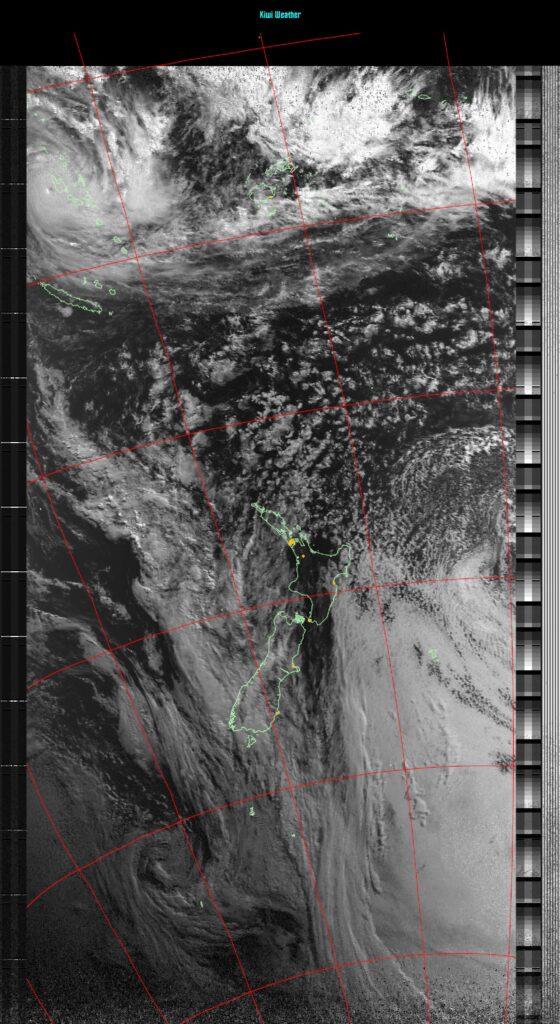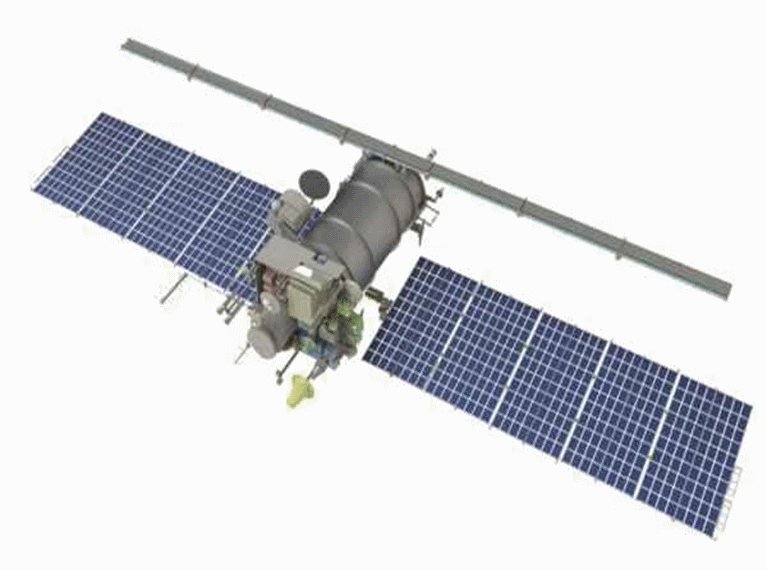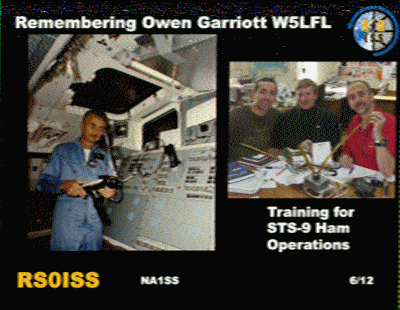Polar Satellites
These are satellites that are in low earth orbit around 800 kilometres (500 miles) above the earth. Their orbits are also inclined so that they orbit above and below the equator. Kiwiweather tracks, captures and releases images from 5 of these satellites and displays them on this website.
NOAA 15 / 18 / 19
There are three NOAA satellites still active, NOAA 15 / 18 / 19, which broadcast weather images as they pass over locations around the world close to dawn and dusk each day.

Whilst having multiple sensors, the APT broadcast signal only transmits a pair of images at any one time. During daytime this is a visible and an infrared image with this switching over to two infrared images at night.
These two images are processed with multiple enhancements to highlight precipitation, air / sea temperature and multiple others.

You can see recent captures on the Polar Orbiting Captures page.
Meteor M-2
The Meteor M-2 satellite is a Russian weather satellite and it broadcasts images with a resolution of 1km pixels, which means there is nine times the amount of detail as in the US NOAA weather satellites.

There are 6 different wavelengths that can be imaged with three in the visible spectrum (red, green and blue) plus three different infra-red wavelengths. Only three are broadcast at a time with these being typically the visible green and blue, plus either a visible red or an infra-red. When only visible wavelengths are broadcast, images are only captured when it is light at some point during the pass.

You can see recent captures on the Polar Orbiting Captures page.
International Space Station
The International Space Station is a joint project between many nations and is currently in low earth orbit. It is manned and has been since November 2000
On a periodic basis, SSTV (Slow Scan TeleVision) pictures are broadcast from the Russian Zarya module. These are often to commemorate events and typically occur every 2-3 months for a few days at a time.
A series typically has 10-20 images in a set and are broadcast in order with about 2-3 images (or part images) being available to download over each pass.

This example image is from a set of images commemorating the life of Owen Garriott. He was an American astronaut who was the pioneer of amateur radio broadcasts from space.
There is also a ham (amateur) radio on the ISS and this can be used by astronauts in their free time to communicate with ham radio operators on the ground.

There is also a programme where astronauts will talk with students in schools are they pass overhead.